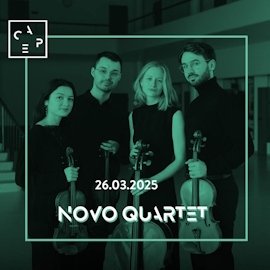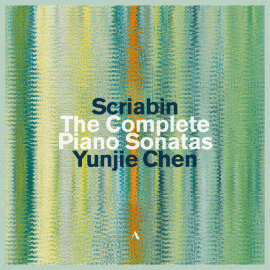The American pianist Ivan Ilic, known by Pizzicato readers from his interview and some CD reviews, was heard by Isabel Herzfeld in a recital at Piano Salon Christophori, Berlin. Here are her impressions (translation by Hollis Matyssek).
Some artists consistently immerse themselves in the same, favorite pieces in order to unearth unexplored facets and meanings; others place value upon versatility and are constantly on the hunt for something new. The latter group includes the pianist Ivan Ilic, an American of Serbian descent based in France. He impresses with the enormous breadth of his repertoire, and creates remarkable combinations of works, plumbing the depths of Debussy anew, passing from Godowsky’s left-hand Chopin Studies to Morton Feldman (in whose works he discovered connections to Scriabin’s mysticism), or contributing to the revival of forgotten composers like Lucien Durosoir. One of his latest discoveries could be found in the middle of his recital at the Berlin Piano Salon Christophori: a piano transcription of Joseph Haydn’s Symphony No. 44 in E Minor, by a certain Karl David Stegmann.
Before he played, the pianist explained the adventurous history of the piece: following a chance encounter in a Cologne supermarket, a music publicist obtained a box full of scores left behind by a centenarian. She was asked to evaluate the legacy’s worth. Among the scores was this Haydn transcription which, as Ilic explained, is not an affront to the original orchestral version, but – on the contrary – improves upon it. And indeed, it is a dense sound texture to experience, in which the dreaded chordal repetitions and tremolos are not as simple and inadvertently awkward as they usually are, when heard in the context of orchestral transcriptions at the piano.
Ilic’s playing is so dynamic, so rhythmically unrelenting, that the listener is drawn into an inescapable undertow, with the whole room in vibration, tense in dramatic suspense. At the same time it is flexible, allowing the melody to breathe, colorfully introducing the themes against one another, and using the pedals with clarity and sophistication.
His is a highly historically-conscious approach, as shown in his interpretations of Beethoven’s C Major Rondo Op. 51 No. 1 and an early E-Flat major sonata by Mozart, teeming with sensitivity to “sentimental style”. Chopin’s Nocturnes and a selection of Scriabin Preludes Op. 11 were also enhanced by his approach, as he made the traditional roots and the connection between both composers clear, dispatching the wildest octave passages with a pseudo-virtuoso thundering of the keys. As an encore, to reward the enthusiastic applause, there was Debussy, etched in a clear, ‘harpsichord-like’ way, eschewing impressionistic blurs.





















